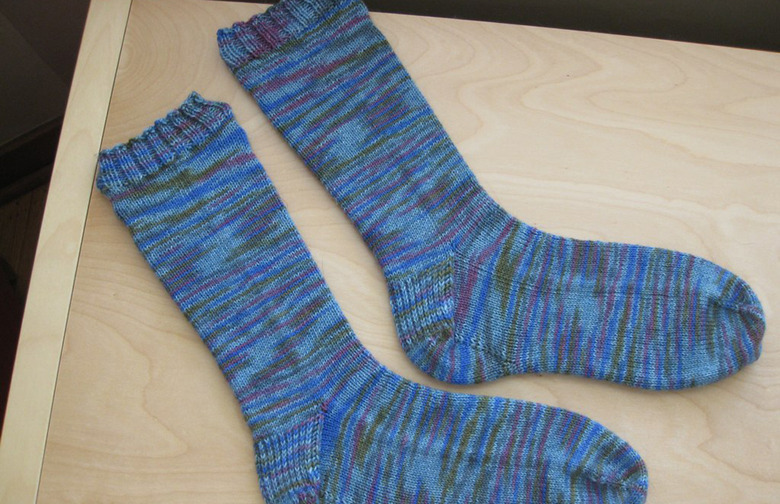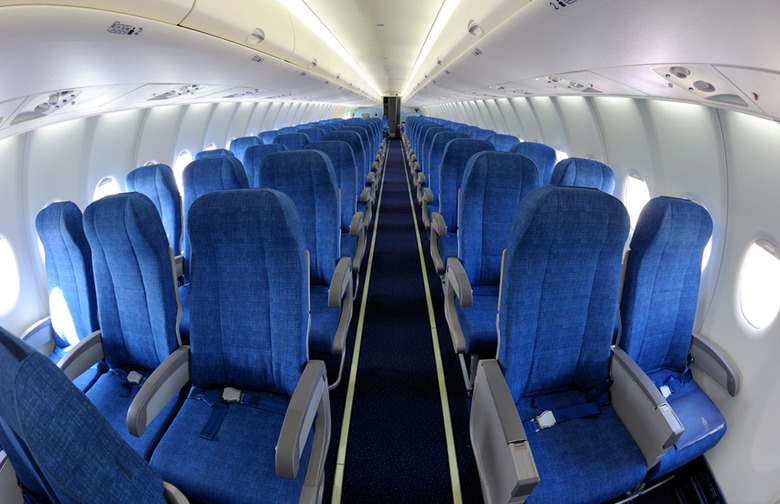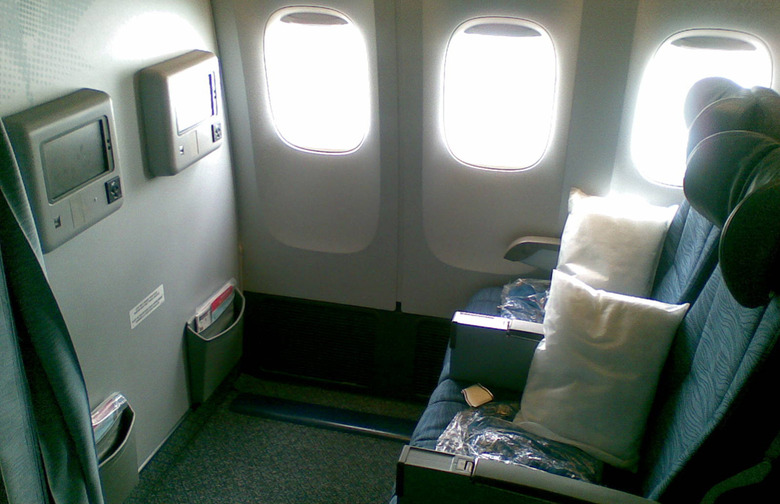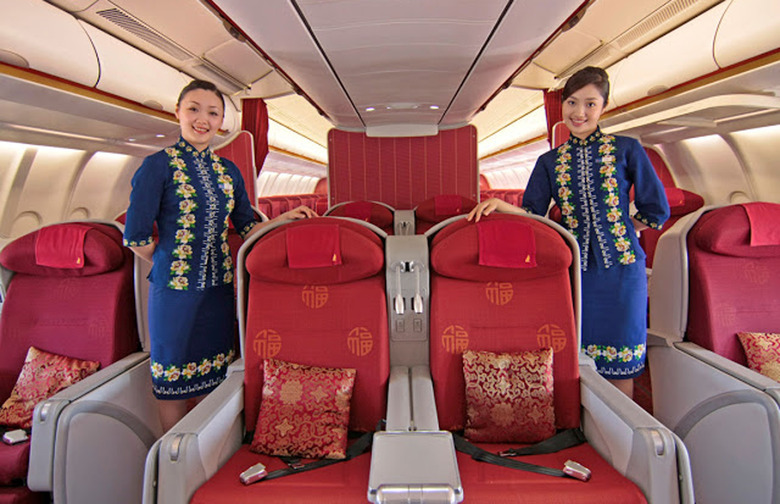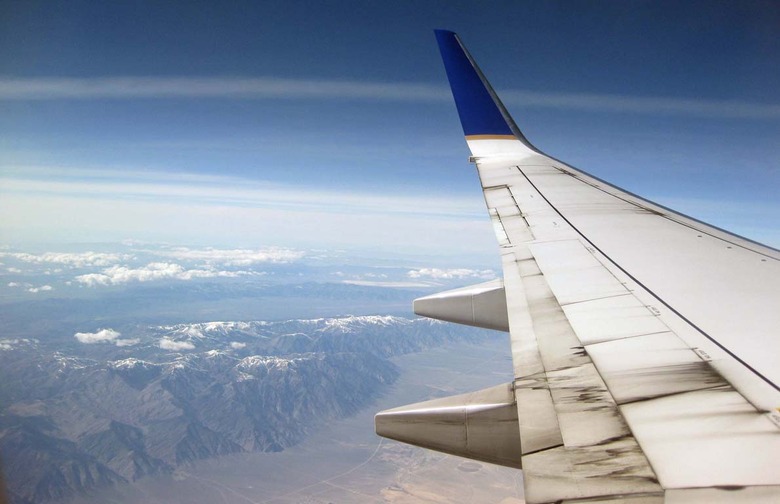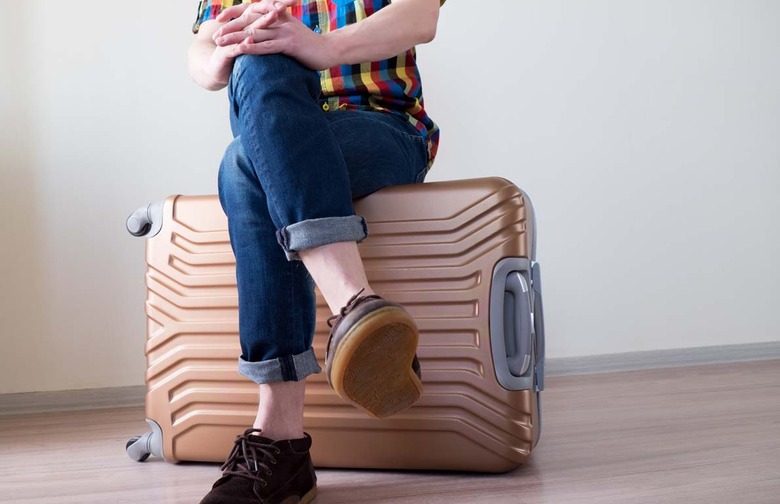10 Strategies To Help You Sleep On An Overnight Flight (Slideshow)
As someone who likes to wear a tie and bring a little class back to flying, I can understand if you're apprehensive about dressing down for departure — however, your clothing selections can have a big effect on your sleep. Opt for loose-fitting, comfortable clothing for long flights, and be sure to layer. Planes can be stuffy and hot, or breezy and cold — sometimes in the course of the same flight — and layering will keep you prepared to weather all the en-route elements.
Heading to London? This local restaurant features a clothing-optional dress code.
Compression Legwear
This might not seem like it fits under "comfortable clothing," but bear with us. Compression socks, stockings, and other legwear help increase circulation (by decreasing the diameter of distended veins), and the comfort gained from better blood flow and valve effectiveness will aid in getting better (and longer) sleep. Also, if you're concerned about clotting, compression legwear can also be a lifesaver — literally!
This parsley tonic is also said to help increase circulation. Get the recipe here!
Decline to Drink
Alcohol might seem like a good way to fall asleep or kick off a vacation, but it actually does more harm than good on long flights. You may drift off quicker, but the quality of sleep will be lower and the booze's effects will wear off quickly. That means a potentially-restful slumber will actually be shorter and leave you feeling groggier and more dehydrated afterward — both of which will make remainder of the flight even more unbearable. Do yourself a favor and use this time to actually rest up for your trip; it will make the arrival drinks that much more enjoyable.
Don’t Overeat
Eating a big meal makes us sleepy, so it seems like a logical step toward the sandman, right? Wrong. Overeating and consuming fatty foods will eventually make you feel bloated and uncomfortable, and the extra stress in your heart (which is working harder to pump more blood to your stomach and digestive tract) will keep you awake. These meals are also bad news if you're concerned about blood clots. Instead, eat a light or moderate meal at least two hours before trying to sleep — just like you should be doing at home.
Check out these 12 heart-healthy foods for keeping your ticker content.
Embrace Your Seat’s Features
The most important feature of your airplane seat is that the cushion doubles as a floatation device, but that won't be of too much assistance on an overnight flight unless, well, you know.... Instead, embrace the two other things your seat does: provides arm support and reclines. Using your arm rests and leaning back both help to ease pressure on your lower spine, which equals easier sleep. If for some reason you can't go back (never choose the last aisle in the plane for this reason; also bathroom proximity), the second best option is sitting up straight and using a travel pillow — which can literally save your neck — or lumbar pillow, which can help keep your spine curved in the correct way. Whatever you do, don't fall asleep leaning forward without back support, as it puts too much pressure on spinal discs. Instead, exercise your right to recline and lean back — don't worry, the person behind you will get over it.
Look for Legroom
Nowadays most airlines allow passengers to select their seats prior to boarding. If you have this opportunity on a long flight, use it to grab a seat in an emergency exit row. Not only do these seats have up to a foot of extra legroom, but you won't be seated next to any children as the minimum age for this aisle is between 12 and 18 years old, depending on the airline. There might be a small upgrade charge associated with these seats, but on a long flight it will be more than worth it. It's worth noting that not all emergency rows contain reclining seats, so this could make things tricky. Just in case, pack light and use the overhead bins for your carry-on, that way you don't have to use up the valuable legroom under the seat in front of you.
Notify Your Flight Attendant
If you do manage to drift away to dreamland, you'll want to take steps ahead of time to ensure you're not disturbed. The first thing you can do is notify your flight attendant that you do not wish to be disturbed during drink or meal service. (Although you might want to pack a bottle or two of water and some snacks so you don't go thirsty or hungry.) Don't worry about bothering the staff with your request, you'll end up saving them work when they don't need to serve you later.
Here are the 10 best snacks to bring on your international flight.
Power Down
Listening to music with headphones is a good idea if it generally helps you sleep, put power down any other screens — including the one in the back of the headrest in front of you. Light exposure is the enemy of sleep, and this includes artificial light from TVs, phone, tablets, or laptops. If possible, avoid looking at any of these electronics prior to sleep, and use the controls on the headrest TVs to lower the brightness or turn the screen off completely.
On the other hand, click here to see why women in China are staring directly at the sun.
Select a Window Seat
Remember that thing about choosing your own seat? Use it to get a window seat too — for three main reasons. First, although an aisle seat allows you the easiest access to the bathroom, it also means you'll have to get up for the window and middle passengers (at least for most plane seat configurations). Second, you'll be able to control the window shade, so you won't have to worry about any unwanted sunrays interrupting your sleep. And third, with the help of a pillow, you can lean against the side of the plane comfortably and don't need to worry about accidentally passing out while leaning into the aisle or your neighbor.
Uncross
It might seem comfortable, but crossing your legs can actually be detrimental to your long term comfort. First, it can potentially restrict blood flow and lead to clotting, especially on flights longer than four hours. It can also torque your back, as your lower half is slightly twisted in one direction while your upper body is still facing straight ahead — putting unnecessary stress on your lumbar region. Evidence of this is the subconscious desire to alternate which leg you cross, as your body is attempting to even out the twisting. Instead, keep your legs straight with a slight bend at the knee.

